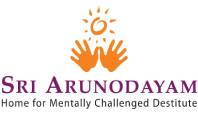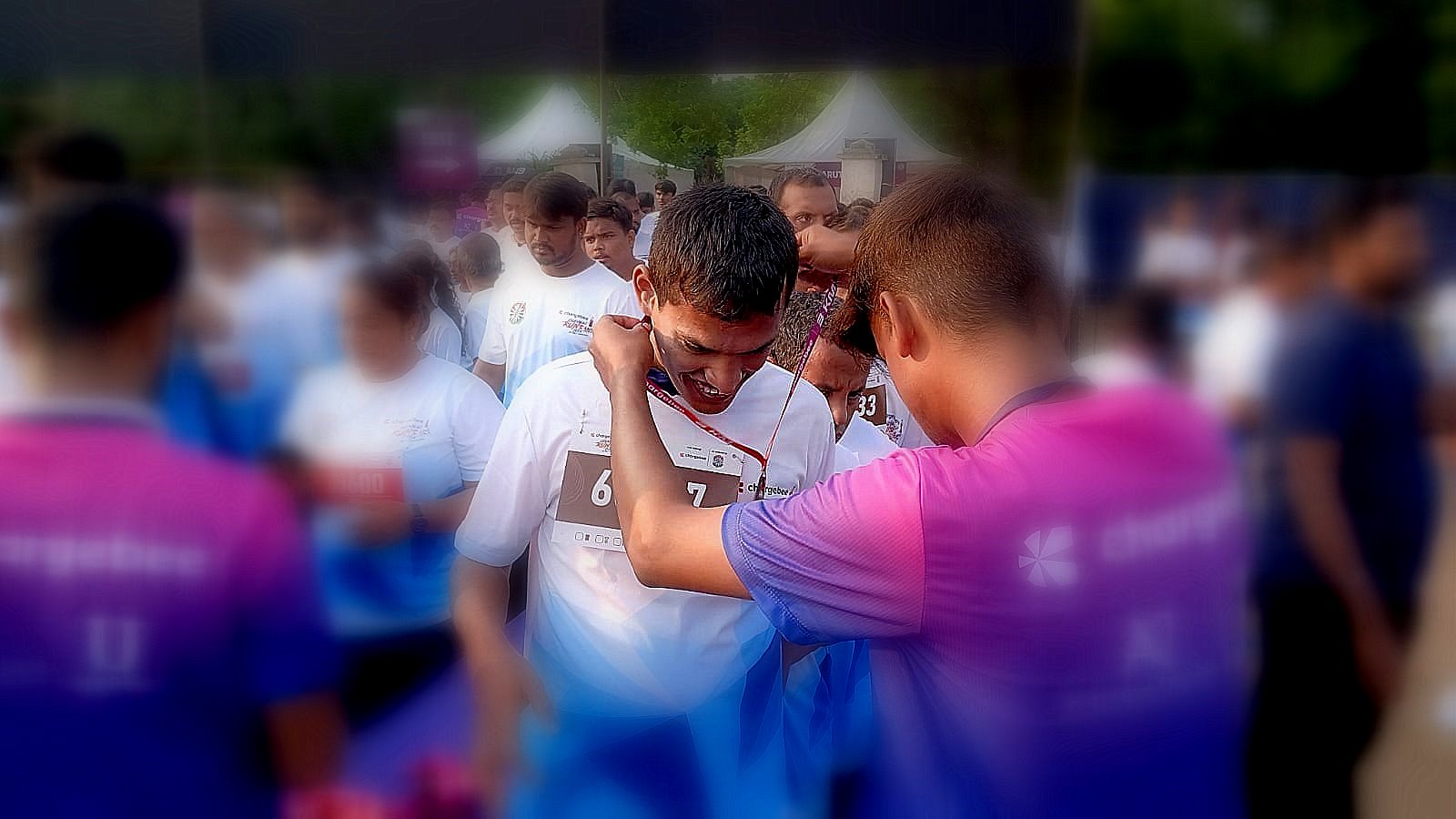Individual Strength & Collective Power: Playing as a Team in ‘The Lion King’
– By Iyyappan Subramaniyan
Ever watched “The Lion King” and noticed how Simba’s strength came from his pride? It’s that whole “strength of the team is each individual member, the strength of each member is the team” idea, right? And honestly, that’s exactly why sports are so important for children with intellectual disabilities (ID).
It isn’t just about winning or losing; it’s about each child discovering their own power through teamwork. Think about it: every child, regardless of their abilities, brings something unique to the field. Working together makes each one stronger, teaches them resilience, and builds character. It’s about contributing to something bigger than themselves and learning to embrace challenges.
So, how does sports connect to “The Lion King” and places like Sri Arunodayam? Well, let’s dive in and explore how it can truly empower these children.
Think about the Pride Lands in “The Lion King.” It’s like a big team. Every animal, from the tiniest mouse to the mightiest lion, has a part to play. When things go wrong, like under Scar’s rule, the whole team suffers.
That’s how we see things at Sri Arunodayam too. Our staff is dedicated, encouraging our children, training them, cheering them on, and celebrating their wins – because we know it builds them up. It’s support that comes from the top down!
Simba’s own journey is a perfect example of “the strength of each member.” He had to figure out who he was, learn from his mistakes, and grow as an individual before he could truly lead the Pride Lands.
And that’s what happens with our children. Sports help them discover their own unique abilities and embrace them. It’s a healthy way to explore what they’re good at and thrive through some friendly competition.
The value of supporting characters: Remember Timon, Pumbaa, and even Zazu? They might seem like sidekicks, but they were crucial to Simba’s journey and the Pride Lands’ survival. Everyone brings something different to the table.
At Sri Arunodayam, everyone plays a role too. Even the children who aren’t on the field are a vital part of the team, cheering their companions on. It all contributes to the athletes’ physical and emotional well-being!
The ‘circle of life’, restored: When Simba took his rightful place, he brought balance back to the Pride Lands. That shows how individual strength and team success are connected. A thriving community needs everyone to do their part.
And that’s exactly what our children are doing. They’re not just playing sports; they’re winning events, qualifying for the Paralympics, and proving everyone wrong who thought they were “good for nothing.” Just like the Pride Lands, Sri Arunodayam’s strength comes from the unique talents and contributions of every single person – athletes, staff, everyone working together. It’s a powerful reminder of how connected we all are.
Ultimately, “The Lion King” shows us that individual growth makes a stronger community. And honestly, sports are one of the easiest and most fun ways to make that growth happen!
Can You Feel the Roar? Sports and Self-Discovery
At Sri Arunodayam, we’ve witnessed sports transforming children’s lives. They become physically stronger and they discover what they’re truly capable of, leading to happier and more inclusive lives. Plus, all that discipline, dedication, and resilience they learn on the field? It helps them focus better in the classroom too!
• Physical Health: Let’s consider the physical side of things. Sports are fantastic for their health! They get a great cardio workout, build strength and endurance, and improve their coordination and balance. Plus, it helps them maintain a healthy weight, reducing the risk of obesity-related problems, and boosts their overall motor skills. Basically, it’s a win-win for their physical well-being.[1]
• Mental and Emotional Well-being: Sports does wonders for children’s mental and emotional well-being too. It builds their self-esteem and confidence, helps them manage stress, anxiety, and even depression, and puts them in a better mood overall. Plus, the feeling of accomplishment and belonging they get from being part of a team is huge for their psychological health. It’s a real boost all around. [2]
• Social Development: Sports are also amazing for their social lives. It gives them a chance to connect with other children, make friends, learn to work together as a team, and feel more included. This helps them overcome isolation and boosts their communication and social skills, which is so important for their overall development. It’s all about building connections and belonging! [3]
• Cognitive Benefits: And guess what? Sports are good for their brains too! It can help children with ID improve their attention and focus, boost their memory and cognitive function, and even develop problem-solving and decision-making skills. It’s like a workout for their minds, contributing to their overall cognitive growth. [4]
• Overall Development: So, when you put it all together, sports really contribute to the whole child. They become more independent and self-reliant, which is huge. And because of that, their quality of life improves, and they’re more likely to get involved in their community. It’s all about enriching their lives and helping them feel like a valued part of society. [5]
From Cub to King (With a Few Scratches)
Sports are amazing for children with ID, but it’s not always a walk in the park. There are a few things we need to be aware of.
• Injury-prone: They might be a little more prone to injuries, simply because of physical limitations or coordination challenges. That just means we need to be extra vigilant with supervision and adapt activities to their individual needs.
• Accessibility: This is indeed a hurdle in our country. We might need to push for more accessible facilities, programs, specialized gear, and coaches who really understand how to work with these children.
• Social issues: Sadly, we can’t ignore the social side of things. Stigma and bullying can be a real issue, so it’s vital to create a supportive and inclusive environment where everyone feels welcome and respected.
• Financial commitment: Let’s not forget about the financial aspect – equipment, transportation, program fees, coach fees, and maybe even personal requirements can add up.
• Time commitment: Sports requires a time commitment. Regular training and practice mean we need to think about scheduling and make sure it’s manageable for everyone involved.
The Circle of Support: Organizations Offering Sports Assistance [6]
• The Ministry of Youth Affairs & Sports has a “Scheme of Sports & Games for the Disabled” that gives grants to schools so they can buy sports equipment and hire coaches for children with disabilities.
• Special Olympics Bharat is another great resource. They’re about giving people with intellectual disabilities a chance to play sports, and they might have their own scholarships or know where to find them.
• The Paralympic Committee of India (PCI) champions Para sports across the country. They find, train, and support athletes, building a thriving Paralympic movement, and making sure India shines at national and international competitions.
• Your state government’s website. Many states offer scholarships for students with disabilities, so look at the education, sports, or social welfare department pages.
• The National Scholarship Portal is a government website where you can search for scholarships, and you can even filter by disability.
• The Department of Empowerment of Persons with Disabilities (DEPwD) has scholarships for students with disabilities, some of which could be used for sports. Their website has information on things like the “Scheme of Scholarships for Students with Disabilities” and the “National Fellowship for Persons with Disabilities.
Finding the Right Watering Hole
Just like every lion in the Pride Lands is different, every child with ID is unique too! Their abilities, what they enjoy, and the specifics of their disability all play a part in what sports will work best for them.
Having a strong pride – parents, caregivers, and professionals all working together – is essential for a positive experience for the child.
Choosing the right “watering hole” – the right sport and program – is also key. You want something safe, fun, and that helps them truly thrive.
And finally, aim for inclusion. Creating a “watering hole” where everyone can play together, regardless of abilities, is vital for social integration and acceptance.
Sports can be life-changing for children with ID. There are definitely challenges to consider, but the benefits totally outweigh any challenges. By focusing on the child’s needs, providing support, and creating truly inclusive spaces, we can help these children experience all the amazing things sports offer – and that strengthens our society in the process.
Reference
[1] World Health Organization (WHO) Guidelines on Physical Activity and Sedentary Behavior. Their guidelines on physical activity for health include recommendations for people with disabilities, emphasizing the importance of regular exercise for overall health and well-being.
Investigation of the effects of physical education activities on motor skills and quality of life in children with intellectual disability – Zekiye Özkan and Rasim Kale. Author information PMCID: PMC10281414 PMID: 37346264.
[2] Physical activity and mental health in children and adolescents with intellectual disabilities: a meta-analysis using the RE-AIM framework by Wen Yang, Xiao Liang, Cindy Hui-Ping Sit. Author information PMCID: PMC9261031 PMID: 35799257
[3] Promoting friendship development in inclusive early childhood classrooms: A literature review by Margaret Krone, University of Massachusetts Amherst, and Seonyeong Yu, University of Massachusetts Amherst. December 2019 International Journal of Early Childhood Special Education
[4] Move Your Body, Boost Your Brain: The Positive Impact of Physical Activity on Cognition across All Age Groups by Felice Festa, Silvia Medori and Monica Macrì ORCID Department of Innovative Technologies in Medicine & Dentistry, University “G. D’Annunzio” of Chieti-Pescara, 66100 Chieti, Italy.
[5] Physical Activity and Quality of Life among People with Intellectual Disabilities: The Role of Gender and the Practice Characteristics by Evelia Franco, Carmen Ocete, Elena Pérez-Calzado, and Ana Berástegui. MDPI Behavioral Sciences 2023.
[6] The information presented is based on what we found on the websites of departments like The Ministry of Youth Affairs & Sports, Special Olympics Bharat, The Paralympic Committee of India (PCI), The National Scholarship and The Department of Empowerment of Persons with Disabilities (DEPwD). Things can change, so please check the official sites for the most current information.
Summary
This blog playfully uses “The Lion King” to highlight the importance of sports for children with intellectual disabilities. Just like in the Pride Lands, everyone has unique talents. Sports help these children discover their strengths, build resilience, and develop teamwork skills. While challenges like accessibility and social stigma exist, they can thrive with support and the right programs (“watering holes”). The blog suggests suitable strategies for determining the right sport for each child and focuses on areas that can strengthen both the child and the community as a whole.
Tags
Intellectual disability sports
Adaptive sports for children with disabilities
Inclusive sports for children with ID
Special needs sports
Sports for children with disabilities
Sports and intellectual disabilities
Sports for children with Down syndrome
Sports for children with autism
Special Olympics
Paralympics
Therapeutic recreation
Recreational therapy
Sports programs for disabilities
Coaching children with disabilities
Physical benefits of sports
Social benefits of sports
Emotional benefits of sports
Cognitive benefits of sports

